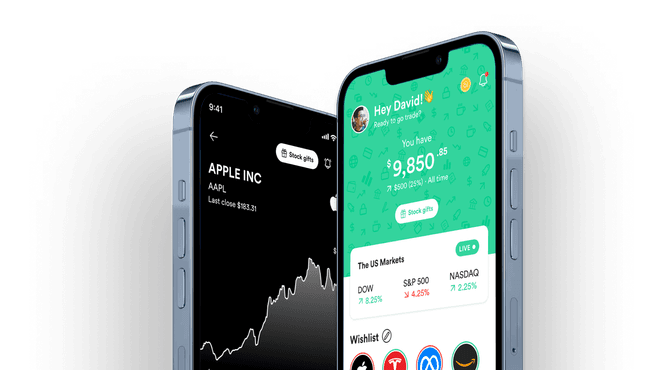If there’s one constant in the stock market, it’s change. Prices move up and down daily, sometimes calmly, other times violently. This movement is called market volatility, and while it often sparks fear, it’s actually a normal and vital part of how markets function.
Volatility isn’t always a bad thing. Understanding it can help investors manage risk, identify opportunities, and make smarter long-term decisions.
What Is Market Volatility?
Market volatility measures how much and how quickly asset prices move over time. A highly volatile market has sharp price swings, while a stable market moves more gradually.
In short:
- High volatility = big, fast price changes
- Low volatility = small, steady movements
Volatility rises when uncertainty increases, whether due to earnings reports, economic data, or global events. When investors react to new information, prices adjust rapidly.
Example
If Apple reports stronger-than-expected earnings, its stock might jump 5% in a day. But disappointing inflation data could drag the entire S&P 500 lower just as quickly.
Measuring Volatility
Volatility is often measured by standard deviation, how far prices deviate from their average. But the most widely followed measure is the VIX Index, known as Wall Street’s “fear gauge.”
- The VIX tracks expected volatility in the S&P 500 for the next 30 days.
- A low VIX (below 15) means stability; a high VIX (above 30) signals fear or uncertainty.
- It typically spikes during crises or recessions, when investors rush to safer assets.
What Causes Market Volatility?
Several key factors drive prices to rise or fall.
1. Economic Data
Reports like inflation, jobs, or GDP growth shape market expectations. A higher-than-expected inflation number can trigger rate hike fears and send stocks lower.
2. Earnings Reports
When major companies like Tesla or Microsoft announce results, markets react instantly. Good news drives prices up, while earnings misses can spark sell-offs.
3. Interest Rate Changes
When central banks raise rates, borrowing becomes expensive and corporate profits can shrink, often leading to falling stock prices.
4. Geopolitical Events
Wars, elections, or trade tensions create uncertainty, prompting investors to move money from stocks to bonds, gold, or cash.
5. Investor Sentiment
Emotions drive short-term volatility. Fear leads to panic selling; greed triggers buying frenzies. Herd behavior often magnifies these reactions.
6. Algorithmic Trading
High-frequency and algorithmic systems can amplify market swings by executing large trades in milliseconds during price shifts.
Why Volatility Isn’t Always Bad
Volatility reflects market activity and opportunity. Without it, there would be no price movement — and no profit potential.
- For traders, volatility means short-term opportunities to buy low and sell high.
- For long-term investors, it creates moments to buy strong assets at discounted prices.
- For markets, it ensures healthy price discovery and liquidity.
During the 2020 pandemic crash, volatility hit record highs. Yet, investors who stayed consistent through the chaos saw major portfolio gains as markets rebounded in 2021.
The key lesson: volatility hurts only when emotions take over.
How to Manage Volatility
Here’s how investors can stay calm and make volatility work in their favor.
1. Diversify Your Portfolio
Spread investments across sectors and asset classes like stocks, bonds, and ETFs. Diversification helps cushion losses when one area underperforms.
2. Focus on Quality Companies
Firms with strong earnings, cash flow, and leadership weather volatility better than speculative names.
3. Use Dollar-Cost Averaging (DCA)
Investing a fixed amount regularly — no matter the market level — reduces timing risk and takes advantage of price dips automatically.
4. Think Long Term
Market dips are temporary, but long-term growth compounds. History shows that staying invested beats trying to predict every move.
5. Keep Emotions in Check
Avoid panic selling or buying out of fear of missing out (FOMO). Sticking to your plan matters more than reacting to headlines.
6. Hold an Emergency Fund
Cash reserves let you stay invested through downturns without being forced to sell assets prematurely.
Volatility by Asset Type
Different assets move differently:
- Stocks are more volatile than bonds.
- Tech stocks often swing more than defensive sectors like utilities.
- Cryptocurrencies are the most volatile, with large daily price shifts.
Knowing an asset’s typical volatility helps set realistic expectations and manage risk.
Conclusion
Volatility is an unavoidable part of investing, a reflection of changing expectations and market psychology.
While short-term traders use it to chase quick profits, long-term investors can use it to accumulate quality assets at lower prices.
The key is perspective. Instead of fearing volatility, understand it, plan for it, and use it to your advantage.
FAQ
1. What does high volatility mean?
It means prices are moving sharply within short periods, often due to uncertainty or major news.
2. Is volatility always bad?
No. Volatility creates both risks and opportunities. It’s only harmful if it drives emotional decisions.
3. How can I protect my portfolio during volatile markets?
Diversify, invest consistently, and stay focused on long-term goals rather than daily price swings.
4. What is the VIX Index?
The VIX measures expected market volatility over the next 30 days and is often called the “fear index.”
Disclaimer
Gotrade is the trading name of Gotrade Securities Inc., registered with and supervised by the Labuan Financial Services Authority (LFSA). This content is for educational purposes only and does not constitute financial advice. Always do your own research (DYOR) before investing.











